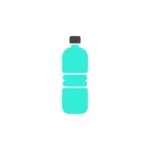Best China Product Sourcing Agent
Our sourcing team is in contact with reliable and top suppliers that are prepared to meet any requirements. With qualitative sourcing services, we guarantee 100% success in your ecommerce selling or dropshipping company.

We Support Following e-Commerce Online Selling Platforms



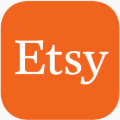

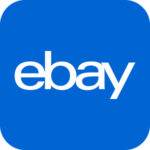

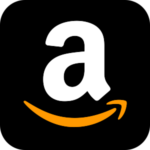


We Offer eCommerce Supply Chain Solutions for All Types of Buyers

If You Do Not Have Suppliers Yet

If You Already Have Suppliers
We Can Still Assist You. Receive The Items From Your Suppliers, Follow Iso Requirements, And Package Your Thing More Professionally And Customizedly.
With Bespoke Product Packaging And Fast Shipping From Our Warehouses, You Will Expand Your Business And Increase Your Exposure.
Additional Quality Sourcing Services
Photography & Graphic Design
We take HIGH-QUALITY images of your products, use PHOTOSHOP, and make them more SUITABLE for product listings. So, MORE customers will visit your product listings and, in turn, BETTER chances for CONVERSION—More DEALS and HIGHER REVENUES!

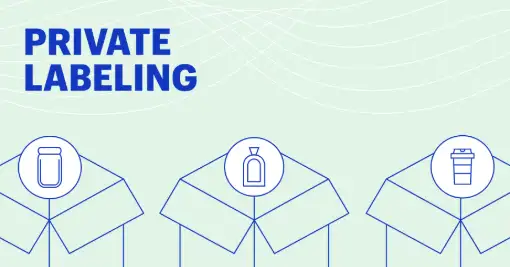
Private Label & Packaging Solutions
Our Private Label Packing Team Is Ready To Fasten The Custom Labels With Custom Packaging. With Private-Label Products, Use Uplevel For Your Business Status And Increase Business Exposure. Skyrocketing Of Sales Is 100% Fact.
We are a one-stop shop. Get the product management, packaging, and shipping services SIMULTANEOUSLY. Relieve your mental stresses and save you TIME—no tension for anything.
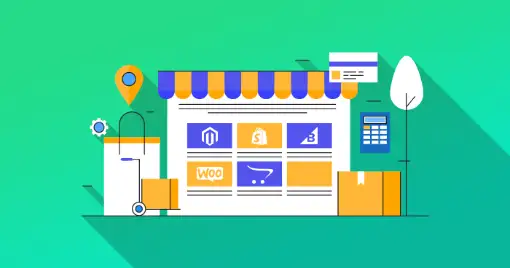
Benefits Of Choosing Leeline Sourcing
Request A Quote Now!
Send us your requirements, and we will get back to you shortly.
Every e-commerce firm must source its products from someplace, and product sourcing is a critical component of the process. Companies must have inventory in order to sell, and product sourcing is how they discover the things that end up on the shelves.
What Is Product Sourcing?
Product sourcing is the process through which a company finds and acquires marketable inventory from trustworthy suppliers in order to sell it to consumers at a profit. Manufacturers, distributors, and craftspeople, as well as other product makers and enterprises, are common suppliers.
Product procurement may appear easy, but it may be a maze of untrustworthy vendors, hidden fees, and even misrepresented or low-quality items. To maintain a competitive advantage, it is critical to learn effective product sourcing tactics in order to maximize your potential profit from each transaction. Reaching out to a product sourcing agent is one approach to speed up the process by leveraging their knowledge of numerous vendors and niches.
What is a product sourcing agent?
A product sourcing agent, often known as a sourcing provider, is someone who has spent several years working in or alongside a sourcing or trading organization. Most product sourcing agents arrive with a contact book full of dependable suppliers with whom they have previously created solid ties.
Product sourcing agents act as your representative and can assist you in identifying a reliable supplier, negotiating prices on your behalf, overseeing production processes, signing off on any required documentation, implementing quality control procedures for your product, and, most importantly, ensuring that you receive your products on time.
While product sourcing agents are a valuable resource at any time, they are especially useful when sourcing your goods from low-cost, multiple-factory locations such as China or Taiwan.
What Is the Product Sourcing Process?
The steps involved in the product sourcing process include:
- Researching the product
- Searching for a vendor
- Calculating and comparing prices
- Negotiating with the supplier
Types Of Product Sourcing:
You can source your profitable products in many ways. You can apply one source or more at a time. It is up to your requirements, and you are to decide.
1. Distributors
If you’re offering a well-known product, this is a fantastic place to start. Wholesalers frequently offer things that they obtained from someone else. They will normally give reasonable pricing for large quantities, although you may incur a hefty initial cost because you are purchasing in bulk. Before committing to purchasing from a wholesaler, ensure that you have sufficient demand.
Pros
- Good profit margins. Manufacturing often has higher margins than dropshipping; wholesaler wholesalers provide a nice intermediate ground.
- Quick and easy. Wholesale product procurement is reasonably quick and easy, especially when using a platform that exclusively features pre-vetted and selected vendors, such as Handshake.
- Products that have been validated. Other firms frequently offer wholesaler’s items, so you know they sell. As a consequence, there is less risk than when launching a new product.
- Initially, less capital is required. Wholesale goods procurement usually demands less money up front than manufacturing things.
There is no need to create items. Wholesale product procurement does not necessitate the expenditure of time, effort, and money in the development of new items. - Possibilities for branding. Although you can’t normally identify the product on its own, many wholesalers provide private labeling services that allow you to brand items like Stoney River.
Cons
- Differentiation is difficult. It might be difficult to distinguish your company from rivals when you sell the same items.
- There is still some danger. You must still acquire inventory up front with no certainty that the items will sell.
- Inventory and fulfillment must be managed. You may be required to stock merchandise and fill client orders. (Again, you could avoid this problem by utilizing Shopify’s Fulfillment Network.)
- Supply management issues. As your company expands, you may find yourself obtaining items from many wholesalers, which can be tough to manage.
2. Manufacturing
With this option, you may go straight to the source and purchase things directly from the factory. Working directly with the manufacturer will save you money, but the cost may still be expensive because you will most likely require a huge bulk order. Sourcing from a manufacturer allows you to receive custom-made things that are unique to your company.
Pros
- Make one-of-a-kind goods. Working with a manufacturer enables your business to provide unique, branded merchandise.
- Excellent quality control. Even if you do not manufacture the items, you can inspect them before selling them. You also have control over branding and pricing.
- More adaptable than alternative approaches. Working with a manufacturer can provide you additional options for how you develop your items, how you optimize them over time, and how much you can make in a given period.
Cons
- High initial expenses. A manufacturer will usually impose a MOQ, which may need a considerable upfront expenditure.
- The product development cycle is longer. A manufacturer may take months to construct a prototype, improve it, get it to your standards, and then make enough completed goods to get you started.
- It is difficult to locate a reputable manufacturer. Finding the ideal manufacturer may be a time-consuming procedure. When looking for a partner, there are several aspects to consider, including pricing, dependability, and time to produce products. (To get started, read this tutorial on how to choose a manufacturer.)
3. DIY
If you operate a small business, you always have the option of creating your own items. This is a wonderful alternative for low-count items or things that need to have a handcrafted, artisanal feel. One possible issue with DIY is that you can’t make products as rapidly as a big supplier, thus demand may outstrip supply.
Pros:
- You get to learn a new skill for your handmade products business.
- I have sold many DIY products. It is a low-cost option for small retail businesses. I got MORE PROFITS with less investment.
- Creating your own products can help you be creative to beat other smaller businesses offering the same products.
- Handmade products have a huge demand in the business online with a good profit margin.
Cons:
- A wholesale supplier running e-commerce business often deals in bulk quantities. Thus, it is not suitable for wholesale suppliers.
- You may need to conduct market research and product research, which is time-consuming.
4. dropshipping
While theoretically, this is product sourcing since you acquire things from a vendor, you never see the product. After the sale, the seller handles everything. Dropshipping is a wonderful choice if you want to remove a lot of the bother from product procurement.
Pros
- Low initial investment. Because you are not creating, designing, storing, or delivering things, you may begin dropshipping with a small initial commitment.
- There is no surplus inventory. If no one buys your items, you’re not stuck with paid-for shelves—in fact, you don’t have to bother about the majority of inventory management responsibilities. This allows you to devote more time to marketing your items and improving your store.
- Scaling is simple. A vast and diversified assortment of items may be readily added to your store. If you offer dog sweaters, for example, you may extend into leashes, water bowls, and toys from a number of sellers.
Cons
- There is insufficient quality control. Because you are not manufacturing your own items, the quality of the products and the amount of fulfillment will be determined by your vendor’s ability.
- There is a lack of competitive difference. When you deal with dropshippers, customers may be able to locate the identical product that you offer on another site (and maybe at a lesser price).
- Profit margins are shrinking. While dropshipping may not need a large initial investment, it can result in lower returns depending on how much you pay your sellers and how competitive your items are.
Six Steps To Successful Product Sourcing
It’s not as simple as just finding a wonderful product and placing it in your stores to source fresh things. However, merchants may take efforts to make the process go more smoothly.
1. Do some research on your product.
First and foremost, merchants must comprehend the goods. Market research is critical to success; acquiring items without conducting the appropriate research is a recipe for disaster. The research that merchants require should be comprehensive. This might include:
Demand from customers. What are your customers requesting? What are people discussing on social media? In polls, what are their main concerns? What type of feedback are you receiving through various channels? What themes pique their interest the most? And, returning to store data, how does what people say truly compare to what they buy?
Trends. What are the product category’s current trends, and which firms appear to be addressing these trends? Are these patterns extending into other categories?
Buyers may make better educated judgments when it comes time to approach suppliers armed with this knowledge. The more a consumer understands about the goods he or she want, the better the outcome.
2. Make contact with any possible suppliers.
Before contacting vendors, determine exactly what you, the buyer, require. Yes, as previously said, conducting product research is an element of this. But knowing what you want out of this initial interaction with the provider is also important. Do you want to learn something? What about samples? Products in particular? Knowing this and being honest about your requirements will make the process go more easily.
This is also the stage at which buyers put their trade show relationships to work, reaching out to suppliers they’ve met or been in touch with. It’s also a good opportunity to use systems like RangeMe, which streamlines the process so buyers can study items and simply contact suppliers all in one place.
3. Request samples
Would you test drive a car before purchasing it? No. As a retail buyer, you will not stock a product without first testing it. When contacting suppliers, ask for samples so you may gather feedback from team members, examine the product up close and personal, and observe how the supplier handles this initial transaction before deciding whether to include it in your product mix. Requesting samples is a crucial component of your sourcing strategy and an excellent approach to assess product quality.
4. Select a source to trial-run an order.
When a retail buyer discovers a product with promise, he or she should order a trial run of that product. This might indicate that the buyer requests a set quantity of units to be trialed across a retail chain, or that a product is being evaluated in only a few places. A buyer may opt to sample select specific goods from the supplier’s whole lineup rather of the entire range.
Buyers should define specifications and key performance indicators for the trial run, such as how long the trial will last, sales ratios, and consumer feedback.
5. Assess the provider
Whether a buyer chooses to proceed with a supplier and create a more long-term relationship is largely influenced by how the provider performs during a trial run. When the trial period is over, having the metrics described above will allow retail purchasers to properly evaluate vendors. Did the product satisfy its objectives? Did it outperform or miss expectations? How did it fare in the stores?
In addition to these queries, retail customers should inquire about the supplier’s connection. Were their messages timely and clear? Did shipments arrive on schedule and with the correct quantities and products? Were the things in good condition when they arrived at the store? Was the advertised price correct?
6. Maintain other supplier options!
Businesses combine or disintegrate altogether, supplies might be difficult to obtain, and product quality can suffer. These things are to be anticipated from suppliers in the vast world of consumer packaged goods, where trends and products can shift as quickly as the wind. And when a buyer expects to see a product on the shelf all the time and then doesn’t, it may be a tremendous letdown, shattering consumer faith in the shop.
It is therefore critical for retailers to keep their supplier options open. Having more than one source for a product guarantees that not only the retailer but also the consumer, gets what they need.
Sourcing Products for Ecommerce FAQs
1. How do you source a product for selling online?
Typically, you have three choices. Make the thing yourself first, then employ a traditional factory or an on-demand service. Second, locate a product provider – a dropshipper, distributor, or wholesaler. Finally, you may employ any combination of the aforementioned methods, as well as collaborate with local physical companies that are not yet online.
2. Where do I look for ecommerce suppliers?
Starting with an internet search is the greatest approach to locate ecommerce providers. Look through wholesale directories, internet marketplaces, and talk to individual small business owners and craftsmen. If you wish to carry a certain brand, contact them directly for a direct wholesale contract.
3. Which product is easy to manufacture?
Small-scale, non-complex products, requiring few raw materials are the easiest to manufacture yourself. These include candles, soaps, jewelry and accessories, small leather goods, small decor or furniture items, some types of garments, sweets, confectionery, and other types of foods.
4. What is the difference between purchasing and sourcing?
While sourcing is the process of locating products, purchasing is the process of obtaining them—including all of the activities involved, from raising a purchase order to getting the product and arranging payment.
5. Which Product Sourcing Strategy Is Best for Your Company?
To determine which product sourcing strategy is best for your company’s needs, examine the advantages and downsides of each.
Most large, established organizations prefer to engage directly with manufacturers in order to avoid middlemen, have greater control over the design process, and acquire huge quantities of items. They are also more at ease with large upfront investments, extended lead times, and complex delivery processes.
Smaller organizations, on the other hand, want to avoid working directly with manufacturers in order to reduce risk, obtain items fast, and streamline logistics.
Wholesale product procurement is likely to be preferred by established small enterprises, confident entrepreneurs, and growth-minded shops.
6. What are the different methods of product sourcing?
The following approaches of product sourcing are discussed: Establish direct connection with the manufacturer without the need of a middleman. This is a less expensive choice than wholesalers, but you must purchase products in bigger quantities. This is because manufacturers have a minimum order quantity (MOQ) that must be met.
Conclusion
As you have discovered, product sourcing is critical to the success of your firm, but it is not simple even for seasoned businesspeople.
We are a top Chinese sourcing firm devoted to assisting our clients in sourcing good items from China at the most affordable costs and providing dependable shipping services. Please CONTACT US if you want assistance with product procurement.


